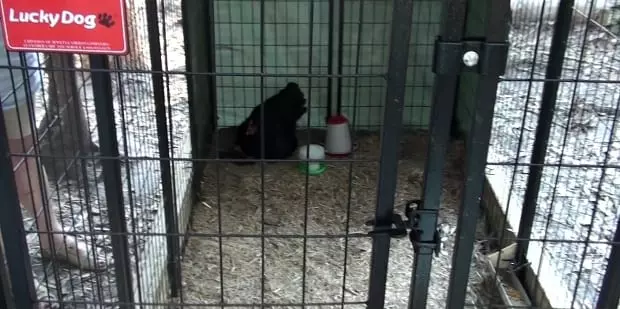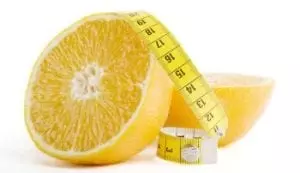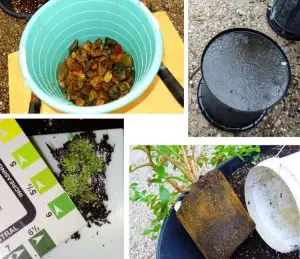One of the biggest infrastructure mistakes some people make when they first start keeping chickens is not building a holding or isolation pen at the same time as they build the coop and run. Holding/isolation pens are not often discussed in the mainstream when talking about keeping chickens or other types of poultry – I guess the average backyard chicken enthusiast doesn't expect to have sick hens. After all, chicken keeping is touted as one of the easiest things to do and in all truth it's not often something does go wrong with a flock but if it does you'll be thankful you had a separate pen built just in case.

If you ever have a sick hen you'll be glad you had a holding isolation pen ready to go (image above)
And that's exactly what I'm talking about – when a chicken gets sick – and it will happen… You'll need a secure place where you can separate the sick bird/s from the rest of the flock. Chickens are susceptible to many types of illnesses and although I'm not going to get into the various types of problems (I will state some signs and symptoms later in this article) suffice to say if you don't have a holding pen ready to go you could quickly lose your whole flock of chickens.
Poultry is infamous for spreading disease and illness quickly between birds and many commercial operators have lost considerable money and stock in the past from their flocks contracting communicable diseases. That's why poultry farmers, breeders, and others who work in the poultry industry are quick to act, isolate, and contain any suspected disease outbreaks.
Backyard poultry keepers should monitor their own flocks with the same vigour as commercial operators not just because of the potential monetary loss but also because we love our birds and it's our responsibility to ensure animals we own are managed as humanely as possible. Furthermore, we eat the eggs and interact with our birds so it's a health issue for us and our family not just a welfare problem for our pets. And, I could go one step further and say bio-security is everyone's responsibility and left to grow could spread from backyard to backyard and then around the country! The latter is not likely but I do think backyard chicken and other poultry keepers should be aware of the potential catastrophe just one sick bird could create.
In most cases, sick chickens simply have a slight cold and take a few days to get over the condition – once the symptoms have completely gone and the bird has recovered it can be let out to rejoin the flock. Obviously, with severe illness the bird may not recover and subsequently die. Hopefully, the isolation pen will do its job in preventing the spread of the disease (assuming it didn't die from natural causes) and the rest of your flock will remain healthy. I've had this happen several times with my birds and never have I had more than one die from an illness passed onto the next so believe me isolation pens do work!
How to use a holding or isolation pen for sick chickens, ducks or other poultry?
Now that I've scared the pants of everyone, let's get into the practicalities of holding/isolation pens specifically for chickens and other poultry like ducks, quail, etc. In all honesty, managing ill birds is a very simple and effective system to employ. The holding or isolation pen doesn't have to be very big, in fact, you could get away with a small metre x metre squared area room enough for one or two hens. However, I would recommend (if you have the space) to build an isolation pen at least 1 or 2 metres wide and about 2-3 metres long.

The holding/isolation pen should be self contained with a separate drinker/feeder, bedding, shelter from elements, and preferably situated away from the main flock areas. It's not really necessary for backyard poultry keepers (and it might be also impractical) to separate the holding/isolation pen from the main pen but as long as sick chickens can't directly interact with the healthy flock then it's fine for the holding area to be contained within the main enclosure.
As soon as you notice one of your birds looking unwell you should immediately take steps to separate it from the rest of the flock and place it in the isolation pen. Even if at a later stage you find out that there's nothing wrong with the hen it's good practise to take bio-security steps just in case!
Sometimes chickens can feel sick and simply have a bad day if this is the case you'll soon see the hen back to normal and wanting to get out of the isolation pen. If the bird shows signs of further decline you can seek veterinary advice or continue to monitor it – it's your call, but at least you have the hen, duck, turkey, quail, etc in a confined area away from the rest of the flock and also making it easier to monitor or catch if you decide to take it to the vet.
Once a holding pen has been used for a sick bird it goes without saying that it should be thoroughly cleaned out and an appropriate disinfectant applied to ensure diseases can't be inadvertently spread in the future.
Should you have more than one holding or isolation pen?
For a standard backyard set-up with under 20 birds I think 1 x holding pen is probably enough. If you have different types of birds and are breeding or exchanging stock then it would be prudent to have a few pens so you can isolate birds from the rest of your flock as required. If your holding pen is big enough or you have plenty of room then you could divide it up into several pens (like breeders do) so you have essentially two large pens with the holding/isolation pen capable of separating not only from the rest of the flock but also each other.
What if you only have a chicken tractor or a small backyard pen?
If you have a small pen with just a few hens or a chicken tractor (which is common in suburbia) it may not be practical to build a static isolation/holding pen. Under these circumstances, you could keep a smaller portable type pen like a dog kennel cage in the shed and bring it out when required. All that is needed is enough room for the hen to rest and be comfortable and some space for a small feeder/drinker. Some of these cages can even be foldable for easy storage so they don't take up much space and are a cost effective, practical alternative to a static holding pen.
Signs and symptoms of a sick chicken
Sick chickens or other poultry is usually easy to spot because the bird will likely be acting quite differently to the rest of the flock and this difference in behaviour tends to stand out. Things like, the bird standing alone and being unusually quiet, not eating or searching for food, the comb falling over or losing its vibrant colour, frequent sneezing, mucus flowing from the beak or nostrils, cloudiness or discharge from the eyes, slow to react, lacklustre effort in trying to get away when you approach, panting, gasping or opening beak for air, making a sound when breathing, discharge from the vent area, unable to walk properly, staying seated in an odd spot, and generally looking unwell.
If you find one of your birds looking out of sorts and showing any of the signs and symptoms above then you should isolate it ASAP.
Other uses for a holding or isolation pen for chickens
But an isolation or holding pen for chickens isn't only useful for sick birds! There are other times when a holding pen comes in handy and over the next few paragraphs I'll detail some good examples.
A hen getting bullied – There can be times when one hen is getting picked on by the rest. Often a tell tale sign of bulling is missing feathers from the chicken's neck or back. Separating the hen and placing her into a isolation pen will not only help her feathers grow back (and they do grow back quickly) it will also 9/10 times stop the bullying behaviour. After a week or so in isolation the bully chicken or chickens will have forgotten about why they picked on the bullied hen and when she is released she will normally be accepted back into the flock without issue. I've done this several times with bullied chickens in my flock and it has worked a treat!
New arrivals to the flock – There comes a time when people decide to get more chickens, ducks, or other poultry they keep either to replace stock for various reasons or just to get more. When you buy new birds it's a good idea to keep them isolated from the main community for a few days. The reasons for this are:
- Disease/illness/parasites – Prevent the introduction of diseases or parasites, which may not have been noticed when the new birds were acquired. Keeping them isolated for a few days gives you the chance to see if the new additions to your flock are healthy and can also give you the opportunity to treat them for worms and other parasites so they don't spread them to your flock;
- Introductions – New chickens or other poultry can sometimes need a little time to adjust to their new surroundings and also the rest of the flock. Even though the birds are isolated from the rest of the flock, their presence will still be noted by the other birds and this separation can give everyone a chance to adjust so when the time comes to let the newbies out into the general community they will be better accepted.
Brooding young chicks or ducklings – Isolation or holding pens can double as brooding pens for young chicks, ducklings, or other breeds of poultry.

In the image above Pekin ducklings are brooding in the safety of a holding pen
How to make a holding or isolation pen for chickens?
If you are a handy person (or you know someone who is) a simple holding pen can easily be made by firstly creating a frame out of steel or wood and then tacking some mesh to it. Of course, the pen should have a dry sheltered part so the bird can roost out of the sun or rain.

I have two good quality isolation pens within my main pen purpose built for dogs but adapted to poultry (image above)
I've built pens before from scratch and it's a pretty satisfying plus cost effective way to go; however, an even easier way is to use flat packed animal enclosures, which are easy to assemble and reasonably priced. My last two enclosures were actually dog kennels made by Lucky Dog, which I easily put together in a matter of minutes! I further retro fitted my pens to make them snake proof by tacking some finer mesh onto the durable steel framework but essentially a flat packed animal enclosure is the perfect option. Below are some links to enclosures that can be purchased online:
For Australians who are looking for the exact same commercial holding pens as I have in the images they are branded "Lucky Dog" and might be difficult to find online since they are a USA company but I purchased mine from Bunnings so you might find them there instead of paying the freight to have it sent over. If you are from the USA or UK it should be pretty easy to find the Lucky Dog enclosures where you are and then adapt them to poultry.
Conclusion
At the end of the day, it's in the best interests for the health of your flock, you, and your family to have a holding/isolation pen just in case you get a sick hen (and you will). There are many ways a holding/isolation pen for chickens and other poultry can be built to fit any situation so go ahead if you haven't already and build one so when the day comes you have a safe, isolated place to separate and house your poor sick bird.
Feel free to add to this article, give your own tips, or make a comment below.












